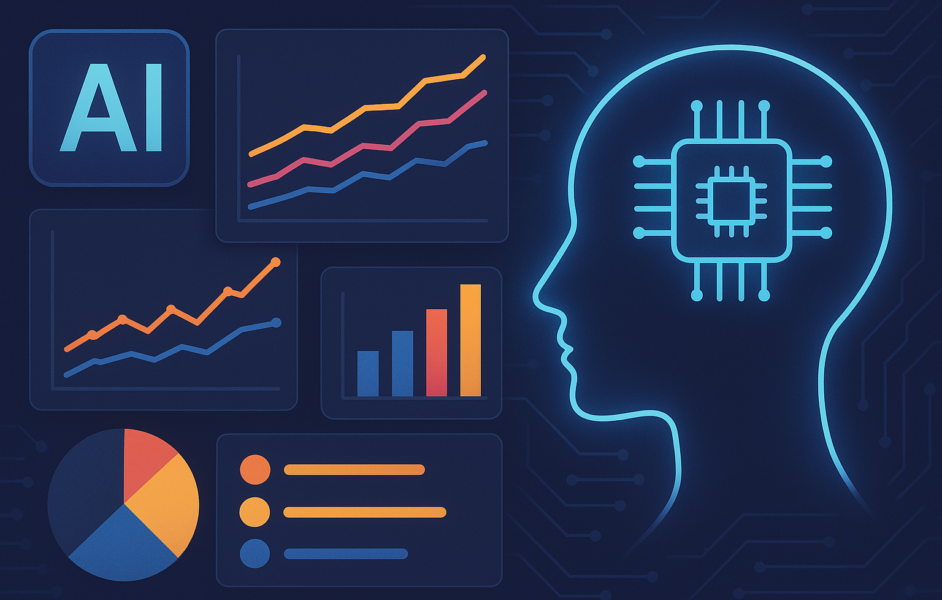The Game-Changing $100 Billion Nvidia and OpenAI Partnership: What It Means for AI Infrastructure
The $100 billion collaboration between Nvidia and OpenAI, announced this Monday, marks a pivotal shift in the AI infrastructure landscape. This landmark agreement encompasses non-voting shares linked to substantial chip purchases, offering enough computing power for over 5 million U.S. households, thus strengthening the ties between two titans of AI technology.
Google Cloud’s Bold Strategy: Attracting the Next Generation of AI Companies
In contrast, Google Cloud is taking a unique route. While major industry players solidify their partnerships, Google is focused on securing the next wave of AI innovators before they grow too large to engage.
The Multi-Faceted Experience of Google Cloud COO Francis deSouza
Francis deSouza, the COO of Google Cloud, offers a multifaceted perspective on the AI revolution. With experience as the former CEO of genomics leader Illumina and as co-founder of the AI alignment startup Synth Labs, he has faced the challenges of managing advanced model safety. Now, as part of Google Cloud’s executive team, he is navigating a significant investment in the next phase of AI development.
Impressive Statistics: Google’s Dominance in AI Infrastructure
DeSouza loves to share compelling figures. In a recent discussion, he emphasized that nine of the top ten AI labs rely on Google’s infrastructure. Additionally, almost all generative AI unicorns utilize Google Cloud, with 60% of global generative AI startups opting for Google as their cloud provider. His announcement of $58 billion in new revenue commitments over the next two years, more than doubling the current annual rate, showcases Google’s growing influence in the sector.
Consolidation in AI Infrastructure: The Nvidia-OpenAI Deal
The Nvidia-OpenAI agreement highlights the consolidation trends reshaping the AI landscape. Microsoft’s initial $1 billion investment in OpenAI has ballooned to nearly $14 billion, while Amazon’s $8 billion input into Anthropic has led to specialized hardware customizations optimizing AI training for its infrastructure. Oracle also emerged as a key player, negotiating a $30 billion cloud deal with OpenAI, plus a staggering $300 billion five-year commitment starting in 2027.
Meta’s Competitive Moves Amid Infrastructure Developments
Even Meta, which is building its own infrastructure, has signed a $10 billion deal with Google Cloud, while planning $600 billion in U.S. infrastructure spending through 2028. The involvement of the Trump administration’s $500 billion “Stargate” project with SoftBank, OpenAI, and Oracle adds another layer of complexity to these partnerships.
Google’s Response: Targeting Startups and Unconventional Partnerships
Despite seeming sidelined in the larger deal-making frenzy, Google is not idle. Google Cloud is securing partnerships with smaller companies like Loveable and Windsurf—identified by deSouza as “primary computing partners”—without making massive upfront investments. This strategy reflects both an opportunity and a necessity, as companies can swiftly escalate from startups to billion-dollar enterprises.
Google Cloud’s Competitive Edge for AI Startups
To enhance its appeal, Google offers AI startups $350,000 in cloud credits, access to technical teams, and go-to-market strategies through its marketplace. The “no compromise” AI stack, featuring everything from chips to models and applications, is designed to empower customers with choice at each level.
Ambitious Expansion of Google’s Custom AI Chip Business
Recently, Google has intensified its efforts to expand its custom AI chip business. Reports indicate the company is negotiating to place its tensor processing units (TPUs) in other cloud providers’ data centers, including a deal with London-based Fluidstack that entails up to $3.2 billion in funding for a New York venture.
Balancing Competition and Collaboration in the AI Landscape
Competing directly with AI firms while providing them with infrastructure requires a nuanced approach. Google Cloud supplies TPU chips to OpenAI and hosts Anthropic’s Claude model via its Vertex AI platform, even while its Gemini models contend with both. Notably, Alphabet holds a 14% stake in Anthropic, termed by deSouza as a “multi-layered partnership.”
Google’s Commitment to Openness in AI Development
Google’s strategy of positioning itself as an open platform aims to foster, rather than stifle, competition. This approach aligns with its history of open-source contributions, from Kubernetes to the pivotal “Attention is All You Need” research that laid the foundation for many modern AI architectures.
Regulatory Scrutiny: Navigating Challenges Ahead
Google Cloud’s initiatives are especially pertinent given recent regulatory scrutiny. A federal ruling on the government’s five-year-old search monopoly case highlighted concerns over Google’s potential dominance in AI due to its extensive search data, prompting fears of monopolistic practices in AI development.
A Vision for a Better Future: Google’s Role in Advancing AI
In conversation, deSouza offers an optimistic outlook. He envisions Google Cloud as a driver of innovation, helping research into Alzheimer’s, Parkinson’s, and climate technologies. “We aim to pioneer technologies that facilitate this crucial work,” he states.
Conclusion: Google Cloud’s Strategic Positioning in a Competitive Landscape
While skepticism remains regarding Google’s motives, its positioning as an open platform that empowers emerging AI innovators may strategically bolster its stance in the face of regulatory pressures.
For our full discussion with deSouza, check out this week’s StrictlyVC Download podcast; new episodes drop every Tuesday.
Here are five FAQs based on the concept of Google Cloud’s extensive growth and presence:
FAQ 1: What does "flooding the zone" mean in the context of Google Cloud?
Answer: "Flooding the zone" refers to Google Cloud’s strategy of saturating the market with its services, products, and partnerships. This involves aggressive marketing, widespread adoption, and integration across various industries to establish a strong foothold in the cloud computing market.
FAQ 2: How is Google Cloud expanding its offerings?
Answer: Google Cloud is continually expanding its offerings by enhancing existing services like machine learning, data analytics, and infrastructure solutions, as well as launching new features. Additionally, they are acquiring complementary businesses and forming strategic partnerships to enhance their capabilities.
FAQ 3: What industries are most impacted by Google Cloud’s expansion?
Answer: Google Cloud’s expansion affects numerous industries, including finance, healthcare, retail, and technology. Its robust solutions cater to various needs, such as data management, application hosting, and cloud security, making it appealing across diverse sectors.
FAQ 4: How does Google Cloud’s strategy benefit businesses?
Answer: Businesses benefit from Google Cloud’s strategy through access to cutting-edge technologies, scalable solutions, and competitive pricing. The emphasis on innovation allows organizations to leverage advanced tools for data analytics, AI, and collaboration, enhancing their operational efficiency and decision-making.
FAQ 5: What are the challenges for competitors in light of Google Cloud’s growth?
Answer: Competitors face challenges such as the need to innovate rapidly, price competition, and the constant pressure to enhance their cloud offerings. Google Cloud’s extensive resources and aggressive market presence make it difficult for other providers to maintain their market share and attract new customers.




